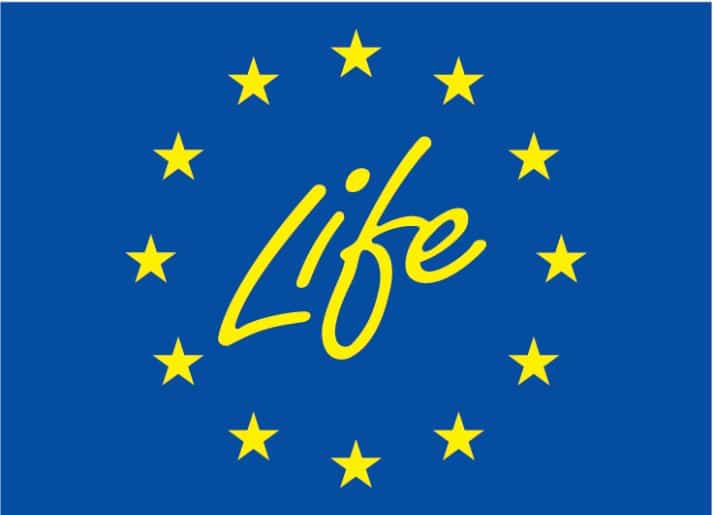A cautious outlook for ETS development
Highlights from the Net Zero Carbon Market Policy Dialogue
On Friday, 4 October 2024, the second part of the annual Net Zero Carbon Market Policy Dialogue took place as part of the LIFE COASE project. After a first session on the state-of-play in international carbon markets was held in May, policymakers, scientists and stakeholders were invited again to discuss current issues related to the development of emissions trading systems (ETSs) around the world.
The event focused on the opportunities and challenges of expanding carbon pricing to new sectors and of incorporating carbon removals into ETSs, as well as the policy insights that can be gained from economic models.
The European Union Emissions Trading System (EU ETS) incentivises energy-intensive sectors including electricity, heavy industry and aviation to decarbonise by pricing emissions. In view of the successful emission reduction in the sectors covered, there is the expectation that the system could also be effective in other sectors where decarbonisation has stagnated. Following this reasoning, the EU has introduced a separate ETS for road transport and buildings which raises questions about how to best implement the new system and whether to apply emissions trading to even more sectors.
The panellists Paul Ekins (University College London), Valeria Forlin (European Commission, DG CLIMA) and Suzi Kerr (Environmental Defense Fund) discussed these questions together with the participants. The debate centred around the suitability of ETSs to drive change in highly emitting sectors. Generally, ETSs should be tested against whether they actually incentivise the uptake of costly technologies such as heat pumps and electric vehicle batteries by reducing the price gap between low-carbon and carbon-intensive solutions. The advantages of ETSs compared to other policy instruments include the revenue from the auctioning of allowances that can be invested to support this transition, as well as the control over and predictability of the emissions trajectory according to the predetermined development of the cap.
Nevertheless, sector expansion should be carefully evaluated, considering the potential negative impact on competitiveness and low-income households, as well as the risk that emissions trading at EU level would replace policy measures at Member State level. Recent studies show that complementary policies remain key to achieving decarbonisation and to ensuring the effectiveness and fairness of ETSs. Participants also emphasised that in some cases regulations, standards or carbon taxes, are the better policy alternative.
A cautious approach to extending ETSs to agriculture, which is set to become the largest emissions sector in the EU by 2040, prevailed in the discussion. There are lessons to be learned from New Zealand, which has explored the extension of its ETS to agriculture since 2008 but has faced challenges, particularly relating to the competitiveness of farmers who are exposed to international markets. As follow-up to a study published in 2023, the European Commission is exploring decarbonisation options including carbon pricing for agriculture through stakeholder workshops, although no legislative action is planned at this stage.
Generally, it was highlighted that many aspects still need careful consideration when it comes to a carbon price for agriculture. For example, it would ideally need to account for the entire agrifood chain rather than only targeting farmers but monitoring emissions along the supply chain (Scope 3 emissions) remains challenging. Furthermore, given the potential impact on food prices and consumers’ diets, agriculture remains an extremely sensitive policy area. Initial voluntary approaches and stakeholder engagement in the policy process could be ways to address this issue. It should also not be excluded that other policy instruments, such as taxes, targeted subsidies and regulations, could be more suitable policy alternatives.
The integration of carbon removals – another hot topic for ETS development – was addressed by the panellists Ruben Vermeeren (European Commission, DG CLIMA), José Pedro Bastos Neves (Ministry of Finance, Brazil) and Stefanie La Hoz Theuer (ICAP) and the participants. The debate highlighted the important role that carbon dioxide removals (CDRs) are expected to play in the decarbonisation strategies of the EU, but also of countries heavily relying on forest carbon credits, such as New Zealand and Brazil. While there was agreement on the necessity to upscale carbon capture and storage (CCS) technologies, many questions were raised about the advantages and disadvantages of integrating CDRs into the EU ETS.
While ETSs can provide an incentive structure for costly technologies, and CDRs could mitigate liquidity issues related to the hoarding of allowances in ETSs, there are concerns about the impacts of CDR-integration on the integrity of carbon markets. This relates not only to the unit quality, i.e., the question of whether CDRs can guarantee a permanent and additional emissions reduction, but also to the risk of mitigation deterrence if companies postpone low-carbon investments in favour of offsetting their emissions. Forecasting the actual availability of CDRs remains challenging and there is a concern that their introduction could destabilize the ETS if the technologies fail to materialise as expected. Hence, it is important to determine the necessary CDR quantity and evaluate which policy instrument (e.g., removal obligations on certain activities, public procurement, emissions trading) is best suited to stimulate demand for removal technologies.
To better assess the potential of ETSs as policy instruments, economic models can provide important information to policymakers. The results of a recent model comparison were presented by Sebastian Osorio (Potsdam Institute of Climate Impact Research), and further insights into the added-value of model-based assessments were provided by Toon Vandyck (OECD) in a third panel.
Generally, the discussion highlighted that model-based assessments face many limitations but nonetheless are valuable in various policy areas. For instance, the assessments are essential to better understand the economic impacts of linking systems and for evaluating the increasingly complex interactions with other policy instruments like the Just Energy Transition Partnerships (JETP), Nationally Determined Contributions (NDCs), international climate finance or the Sustainable Development Goals (SDGs). CGE (Computable General Equilibrium) models are particularly well-suited for contributing to policy debates, especially with the increasing significance of trade, competitiveness, and supply chain linkages. These models could be further enhanced by integrating additional data sources, such as energy models, integrated assessment models (IAMs), land-use models, and household-level data.
Many of these aspects were reflected in a comparison of 17 carbon market models from 16 different organisations that was conducted via a survey and a previously organised workshop by the LIFE COASE project. The key objective was to identify the core assumptions and results of the different models, including the main drivers behind carbon prices and the modelling of carbon removals. The survey revealed that carbon prices are predicted to rise across jurisdictions, with non-EU ETS prices generally lower than those of the EU.
Linkages to other carbon markets were not a major feature in most models, reflecting the current global policy landscape. Similarly, only five models included international credits. Of the 17 models, 11 incorporated CDRs, such as afforestation, BECCS (Bioenergy with Carbon Capture and Storage), DACCS (Direct Air Carbon Capture and Storage), and other approaches. The models presented varying upper bounds on CDR availability, typically set between 2025 and 2035.
Lastly, the debate emphasized the need to close the gap between science and policymaking through intensified collaboration, workshops, seminars, and project meetings, and by enhancing data transparency and sharing.







